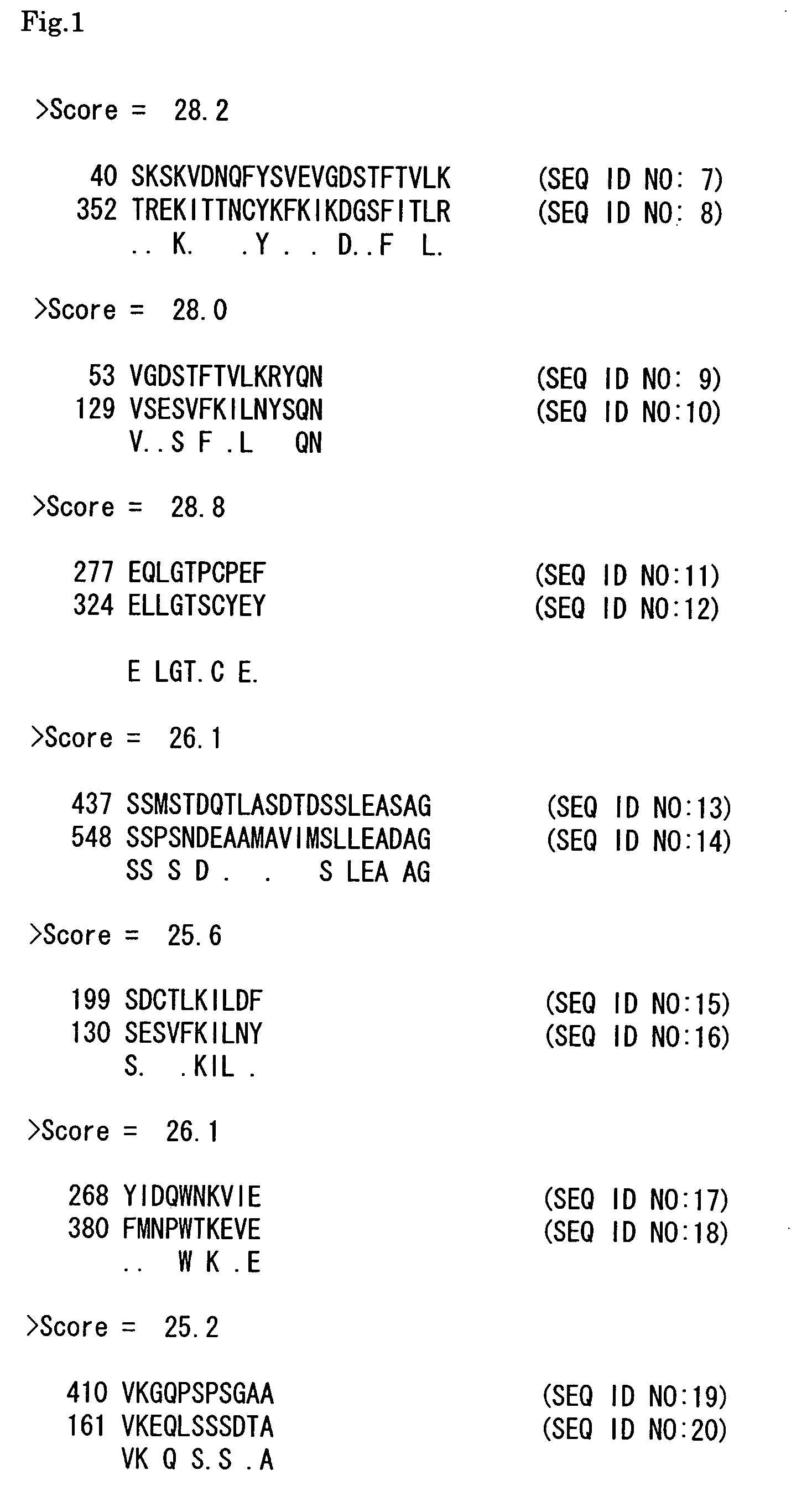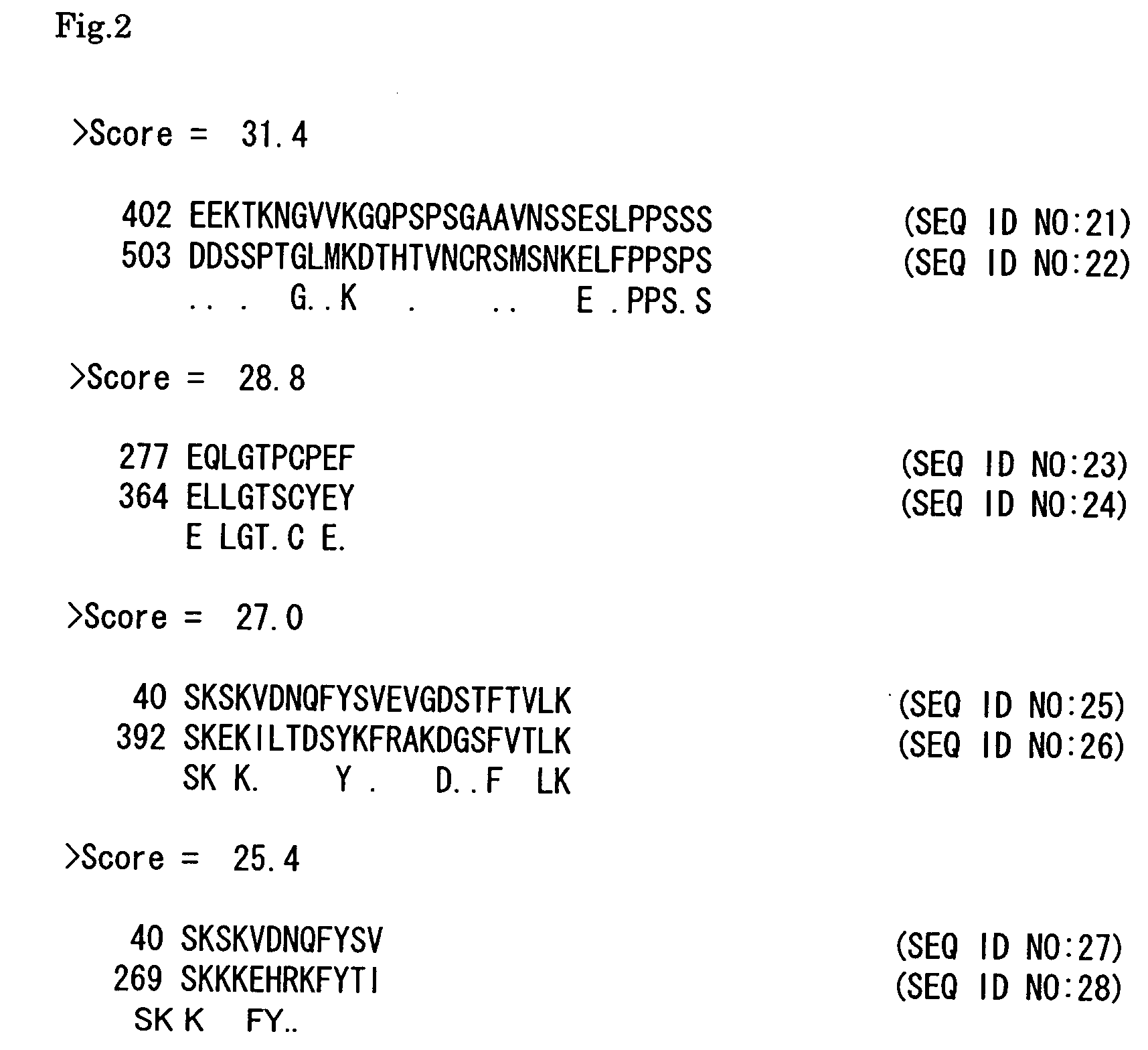Agent for controlling circadian rhythm disorder
a technology of circadian rhythm and agent, applied in the field of control of circadian rhythm disorders, can solve problems such as impaired brain function, and achieve the effect of suppressing transcriptional activity, inhibiting the phosphorylation of bmal1, and inhibiting the phosphorylation of bmal1
- Summary
- Abstract
- Description
- Claims
- Application Information
AI Technical Summary
Benefits of technology
Problems solved by technology
Method used
Image
Examples
example 1
In Silico Search for Proteins that Interact with JNK3
[0118] Prediction of the proteins that interact with JNK3 was conducted according to the method set forth in the International Patent Publication No: WO 01 / 67299. First, the amino acid sequence of JNK3 was decomposed into oligopeptides having a pre-determined length to search in a database for proteins having the amino acid sequence of each of the oligopeptides, or having the homologous amino acid sequences to these amino acid sequences. Next, the local alignment between proteins obtained and JNK3 was conducted to predict that the proteins having a high local alignment score might be those interacting with JNK3. The criteria for the local alignment score was the same as that in the method described in the International Patent Publication No: WO 01 / 67299, which is to say no less than 25.0. Furthermore, JNK3 is a protein that is specifically expressed in the cerebral nervous system and is known to impair brain function when express...
experimental example 1
Suppression of BMAL1 / CLOCK Dependent Transcription by JNK3
[0130] BMAL1 is known as a transcription factor that modulates the expression of the Per gene by forming a heterodimer with CLOCK to bind to the E-box (5′-CACGTG-3′) present in the 5′ upstream region of the Per gene (Gekakis N. et al., Science, 1998, Vol. 280, pp. 1564-1569). Thus, in order to analyze the interaction between JNK3 and BMAL1 in the cell, a reporter assay was used to test whether the ability of the BMAL1 / CLOCK heterodimer for transcriptional activation was modified by the activation of JNK3. Here, it has been known that JNK3 is activated by a cascade wherein MKK4 / MKK7 that has been phosphorylated and activated by MEKK1 phosphorylates JNK3. Accordingly, it was analyzed whether the activity (ability for transcriptional activation) of the BMAL1 / CLOCK complex was varied by activating JNK3 by way of coexpression of an active form of MEKK1 or an active form of MKK7.
[0131] Materials
[0132] A mammalian expression plas...
PUM
 Login to View More
Login to View More Abstract
Description
Claims
Application Information
 Login to View More
Login to View More - R&D
- Intellectual Property
- Life Sciences
- Materials
- Tech Scout
- Unparalleled Data Quality
- Higher Quality Content
- 60% Fewer Hallucinations
Browse by: Latest US Patents, China's latest patents, Technical Efficacy Thesaurus, Application Domain, Technology Topic, Popular Technical Reports.
© 2025 PatSnap. All rights reserved.Legal|Privacy policy|Modern Slavery Act Transparency Statement|Sitemap|About US| Contact US: help@patsnap.com



